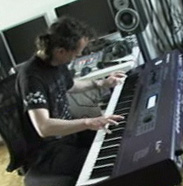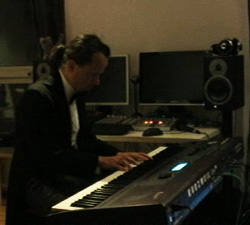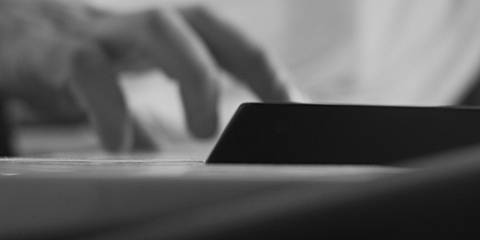
The „Akustik Kies“ Double Album

2010 marked a significant change in the approach for The MoinSound Studio Sessions. This event series had, all through 2009, featured a musical approach similar to that of Wie groß ist die Luft? (read: trombone and vocal noises and komische Elektronik), with some multi-instrumentalist expansions of that (being melodica, acoustic and electric guitar and bass guitar, saxophone, recorder, found percussion) also finding its way onto the MoinSound Studio Sessions release.
2010 however had Straschill mainly moving (or moving back, if you will) towards the acoustic piano. Acquiring a Kurzweil K2600XS, a great master keyboard, and Steinberg’s The Grand 3 helped a lot here, and so in the end, there was a great amount of recordings of acoustic piano playing available – both with and (this may come as a surprise to you) without electronic processing and realtime loops.
So much material indeed, and such diverse material, that the logical conclusion was to release those recordings as the first-ever Moinlabs double album. Entitled „Akustik Kies“, this double album consists of the parts Transitiv Sehen (solo acoustic piano without any processing) and Reflexiv Hören (piano plus komische Elektronik, scheduled for release Q1/2011). Both parts of this double album will be available separately.
Transitiv Sehen

The recordings on the Transitiv Sehen part of the album do indeed form an innovation in Straschill’s work. For the first time, you have an album with only one instrument, performed live and without any electronic helpers. In stark contrast to everything from the first The Ceteron Legacy release (dating back from 1989) up to the last MoinSound Studio Sessions album, this is the real deal. Acoustic piano. Live. Improvised. No electronics. No overdubs. No loops. No safety net.
So where do you go with an acoustic piano in 2010, with a background that usually relies heavily on electronic processing? There’s lots of different musical influences which, although not openly visible in most of Straschill’s recent works, have still been there all the time under the surface.

It already starts off with a back-and-fro between bebop-balladesque playing on one and two-voiced counterpoint on the other side in the opening Die Sonne scheint Dir aus der Jackentasche. Perhaps the most complex track on this album, Der Schicksalsfurz starts off with monophonic melodies reminiscent of Bartok’s „Mikrokosmos“, before later in the track it progresses to smell strongly of teenage Hindemith spirit.
There’s medieval influences (e.g. in Des Schlupfreglers Weis‘), and some parts show an almost Feldmannesque minimalism, as best seen in the introduction to Ersatzverkehr.
All in all, it’s definitely one of those albums which are best enjoyed listened to from beginning to end – including the closing epilogue (avaliable only in the download version).
How to get it
The album is available as a digital album download from bandcamp via the player, or directly here.
Note that you should really get the download – it features some fancy PDF booklet not available anywhere else.
Credits & Acknowledgements
The booklet photos „Klaviertaste“, „Obelisk“ and „Poser im Profil“ were photographed by m333l. The artist also likes to thank all those followers who have continued to follow the bi-weekly MSSS, no matter what he threw at them – in 2010 this was anything in the force field between An Ambient Manifold, Nerdville and the very piano sessions. A special mention is due to the very supportive and knowledgeable community (and site administration) at Café Noodle.

